Topside Ionosphere and Plasmasphere Modelling Using GNSS Radio Occultation and POD Data
Abstract
1. Introduction
2. Dataset
3. Method
3.1. Climatological Modeling
3.2. Background Construction
3.3. Tomographic Reconstruction
4. Results
4.1. General Distributions
4.2. Residuals
4.3. Assessment Using Ionosonde Data
4.4. Assessment Using DMSP Data
4.5. Assessment Using Van Allen Probes Data
4.6. Assessment Using METOP Data
5. Conclusions
Author Contributions
Funding
Data Availability Statement
Acknowledgments
Conflicts of Interest
References
- Nava, B.; Coisson, P.; Radicella, S.M. A new version of the NeQuick ionosphere electron density model. J. Atmos. Sol. Terr. Phys. 2008, 70, 1856–1862. [Google Scholar] [CrossRef]
- Gulyaeva, T.L.; Titheridge, J.E. Advanced specification of electron density and temperature in the IRI ionosphere—Plasmasphere model. Adv. Space Res. 2006, 38, 2587–2595. [Google Scholar] [CrossRef]
- Tariku, Y.A. Validation of the IRI 2016, IRI-Plas 2017 and NeQuick 2 models over the West Pacific regions using the SSN and F10.7 solar indices as proxy. J. Atmos. Sol. Terr. Phys. 2019, 195, 105055. [Google Scholar] [CrossRef]
- Cherniak, I.; Zakharenkova, I. NeQuick and IRI-Plas model performance on topside electron content representation: Spaceborne GPS measurements. Radio Sci. 2016, 51, 752–766. [Google Scholar] [CrossRef]
- Gulyaeva, T.L. Storm time behavior of topside scale height inferred from the ionosphere—Plasmasphere model driven by the F2 layer peak and GPS-TEC observations. Adv. Space Res. 2011, 47, 913–920. [Google Scholar] [CrossRef]
- Prol, F.S.; Hernández-Pajares, M.; Camargo, P.O.; Muella, M.T.A.H. Spatial and temporal features of the topside ionospheric electron density by a new model based on GPS radio occultation data. J. Geophys. Res. Space Phys. 2018, 123, 2104–2115. [Google Scholar] [CrossRef]
- Li, Q.; Liu, L.; Jiang, J.; Li, W.; Huang, H.; Yu, Y.; Li, J.; Zhang, R.; Le, H.; Chen, Y. α-Chapman scale height: Longitudinal variation and global modeling. J. Geophys. Res. Space Phys. 2019, 124, 2083–2098. [Google Scholar] [CrossRef]
- Wu, M.J.; Guo, P.; Chen, Y.L.; Fu, N.F.; Hu, X.G.; Hong, Z.J. New Vary-Chap scale height profile retrieved from COSMIC radio occultation data. J. Geophys. Res. Space Phys. 2020, 125, e2019JA027637. [Google Scholar] [CrossRef]
- Heise, S.; Jakowski, N.; Wehrenpfennig, A.; Reigber, C.; Lühr, H. Sounding of the topside ionosphere/plasmasphere based on GPS measurements from CHAMP: Initial results. Geophys. Res. Lett. 2002, 29, 1699. [Google Scholar] [CrossRef]
- Spencer, P.S.J.; Mitchell, C.N. Imaging of 3D plasmaspheric electron density using GPS to LEO satellite differential phase observations. Radio Sci. 2011, 46, RS0D04. [Google Scholar] [CrossRef]
- Wu, M.J.; Guo, P.; Xu, T.L.; Fu, N.F.; Xu, X.S.; Jin, H.L.; Hu, X.G. Data assimilation of plasmasphere and upper ionosphere using COSMIC/GPS slant TEC measurements. Radio Sci. 2015, 50, 1131–1140. [Google Scholar] [CrossRef]
- Gallagher, D.L.; Craven, P.D.; Comfort, H. Global core plasma model. J. Geophys. Res. 2000, 105, 18819–18833. [Google Scholar] [CrossRef]
- Schreiner, W.S.; Weiss, J.P.; Anthes, R.A.; Braun, J.; Chu, V.; Fong, J.; Hunt, D.; Kuo, Y.-H.; Meehan, T.; Serafino, W.; et al. COSMIC-2 radio occultation constellation: First results. Geophys. Res. Lett. 2020, 47, e2019GL086841. [Google Scholar] [CrossRef]
- Forsythe, V.V.; Duly, T.; Hampton, D.; Nguyen, V. Validation of ionospheric electron density measurements derived from Spire CubeSat constellation. Radio Sci. 2020, 55, e2019RS006953. [Google Scholar] [CrossRef]
- Yue, X.; Schreiner, W.S.; Hunt, D.C.; Rocken, C.; Kuo, Y.-H. Quantitative evaluation of the low Earth orbit satellite based slant total electron content determination. Space Weather 2011, 9, S09001. [Google Scholar] [CrossRef]
- Reinisch, B.R.; Galkin, I.A. Global ionospheric radio observatory (GIRO). Earth Planets Space 2011, 63, 377–381. [Google Scholar] [CrossRef]
- Garner, T.W.; Taylor, B.T.; Gaussiran, T.L., II; Coley, W.R.; Hairston, M.R.; Rich, F.J. Statistical behavior of the topside electron density as determined from DMSP observations: A probabilistic climatology. J. Geophys. Res. 2010, 115, A07306. [Google Scholar] [CrossRef]
- Zhelavskaya, I.S.; Spasojevic, M.; Shprits, Y.Y.; Kurth, W.S. Automated determination of electron density from electric field measurements on the Van Allen Probes spacecraft. J. Geophys. Res. Space Phys. 2016, 121, 4611–4625. [Google Scholar] [CrossRef]
- Prol, F.S.; Themens, D.R.; Hernández-Pajares, M.; Camargo, P.O.; Muella, M.T.A.H. Linear Vary-Chap Topside Electron Density Model with Topside Sounder and Radio-Occultation Data. Surv. Geophys. 2019, 40, 277–293. [Google Scholar] [CrossRef]
- Foelsche, U.; Kirchengast, G. A simple “geometric” mapping function for the hydrostatic delay at radio frequencies and assessment of its performance. Geophys. Res. Lett. 2002, 29, 1473. [Google Scholar] [CrossRef]
- Zhong, J.; Lei, J.; Dou, X.; Yue, X. Assessment of vertical TEC mapping functions for space-based GNSS observations. GPS Solut. 2016, 20, 353–362. [Google Scholar] [CrossRef]
- Ssessanga, N.; Kim, Y.H.; Kim, E. Vertical structure of medium-scale traveling ionospheric disturbances. Geophys. Res. Lett. 2015, 42, 9156–9165. [Google Scholar] [CrossRef]
- Olivares-Pulido, G.; Hernández-Pajares, M.; Aragón-Angel, A.; Garcia-Rigo, A. A linear scale height Chapman model supported by GNSS occultation measurements. J. Geophys. Res. Space Phys. 2008, 121, 7932–7940. [Google Scholar] [CrossRef]
- Zhelavskaya, I.S.; Shprits, Y.; Spasojevic, M. Empirical Modeling of the Plasmasphere Dynamics Using Neural Networks. J. Geophys. Res. 2017, 122, 11227–11244. [Google Scholar] [CrossRef]
- Austen, J.R.; Franke, S.J.; Liu, C.H. Ionospheric imaging using computerized tomography. Radio Sci. 1988, 23, 299–307. [Google Scholar] [CrossRef]
- Wei, W.; Biwen, T.; Jiexian, W. Application of a simultaneous iterations reconstruction technique for a 3D water vapor tomography system. Geod. Geodyn. 2013, 4, 41–45. [Google Scholar] [CrossRef]
- Pryse, S.E.; Kersley, L. A preliminary experimental test of ionospheric tomography. J. Atmos. Sol. Terr. Phys. 1992, 54, 1007–1012. [Google Scholar] [CrossRef]
- Prol, F.S.; Hoque, M.M.; Ferreira, A.A. Plasmasphere and topside ionosphere reconstruction using METOP satellite data during geomagnetic storms. J. Space Weather Space Clim. 2021, 11, 5. [Google Scholar] [CrossRef]
- Prol, F.S.; Camargo, P.O.; Hernández-Pajares, M.; Muella, M.T.A.H. A New Method for Ionospheric Tomography and its Assessment by Ionosonde Electron Density, GPS TEC, and Single-Frequency PPP. IEEE Trans. Geosci. Remote Sens. 2019, 57, 2571–2582. [Google Scholar] [CrossRef]
- Kashcheyev, A.; Nava, B. Validation of NeQuick 2 model topside ionosphere and plasmasphere electron content using COSMIC POD TEC. J. Geophys. Res. Space Phys. 2019, 124, 9525–9536. [Google Scholar] [CrossRef]
- Pezzopane, M.; Pignalberi, A. The ESA Swarm mission to help ionospheric modeling: A new NeQuick topside formulation for mid-latitude regions. Sci. Rep. 2019, 9, 12253. [Google Scholar] [CrossRef] [PubMed]
- Pignalberi, A.; Pezzopane, M.; Nava, B.; Coïson, P. On the link between the topside ionospheric effective scale height and the plasma ambipolar diffusion, theory and preliminary results. Sci. Rep. 2020, 10, 17541. [Google Scholar] [CrossRef] [PubMed]
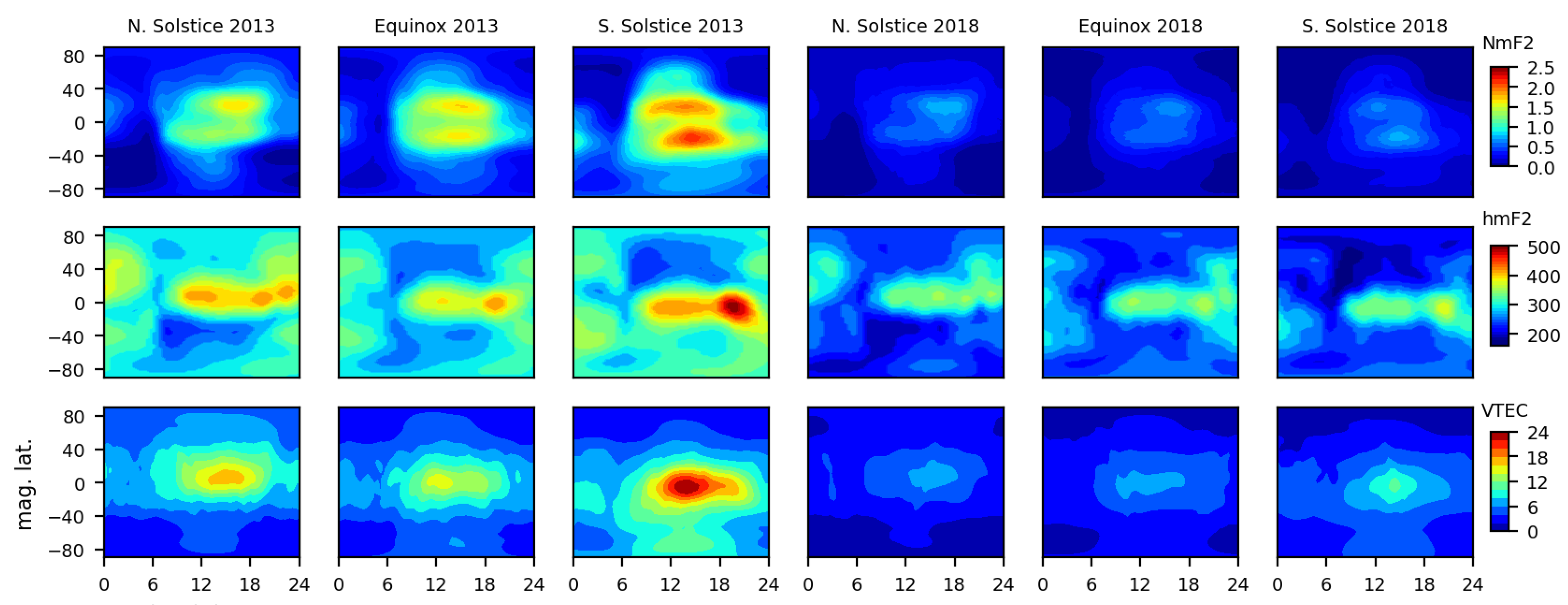
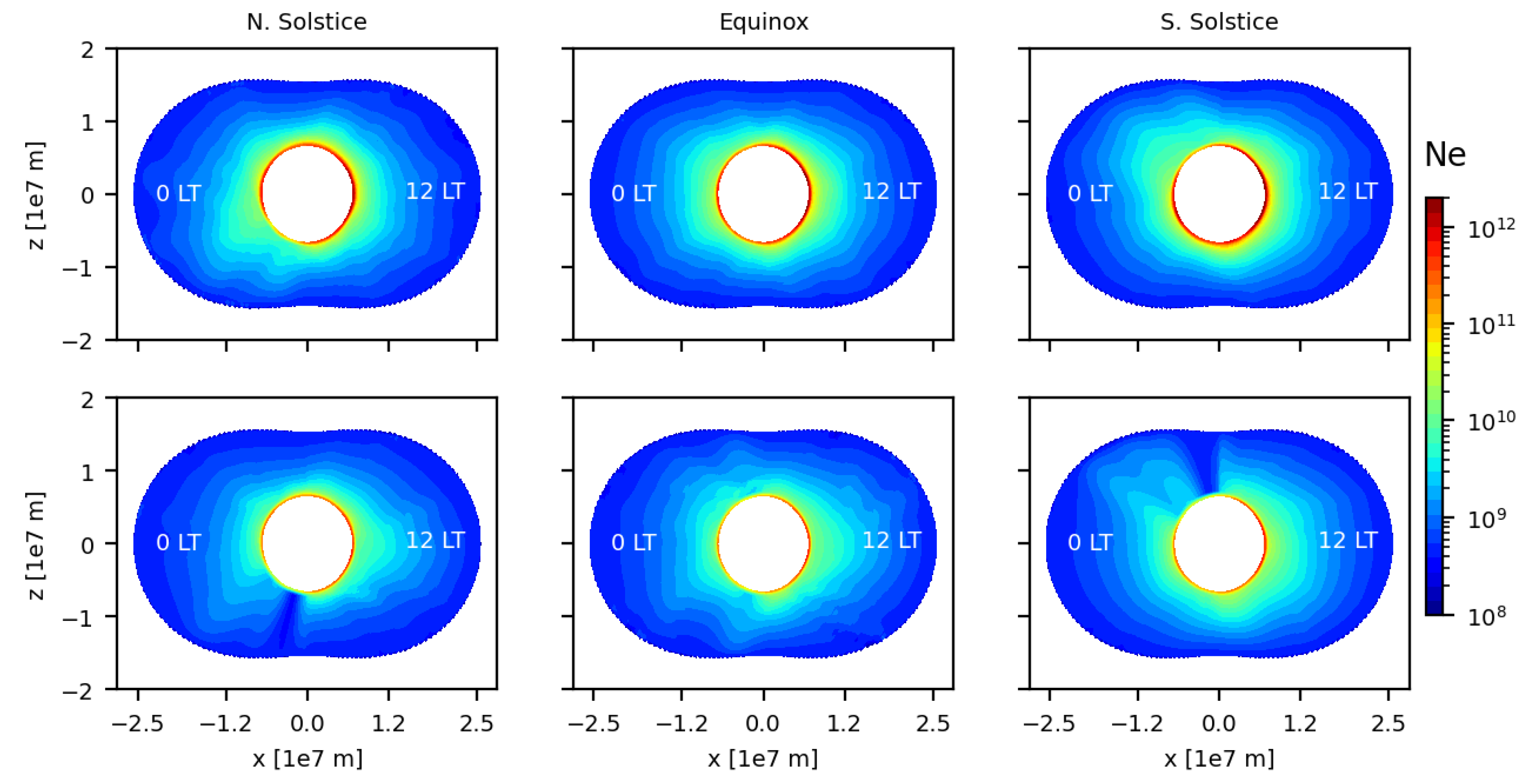
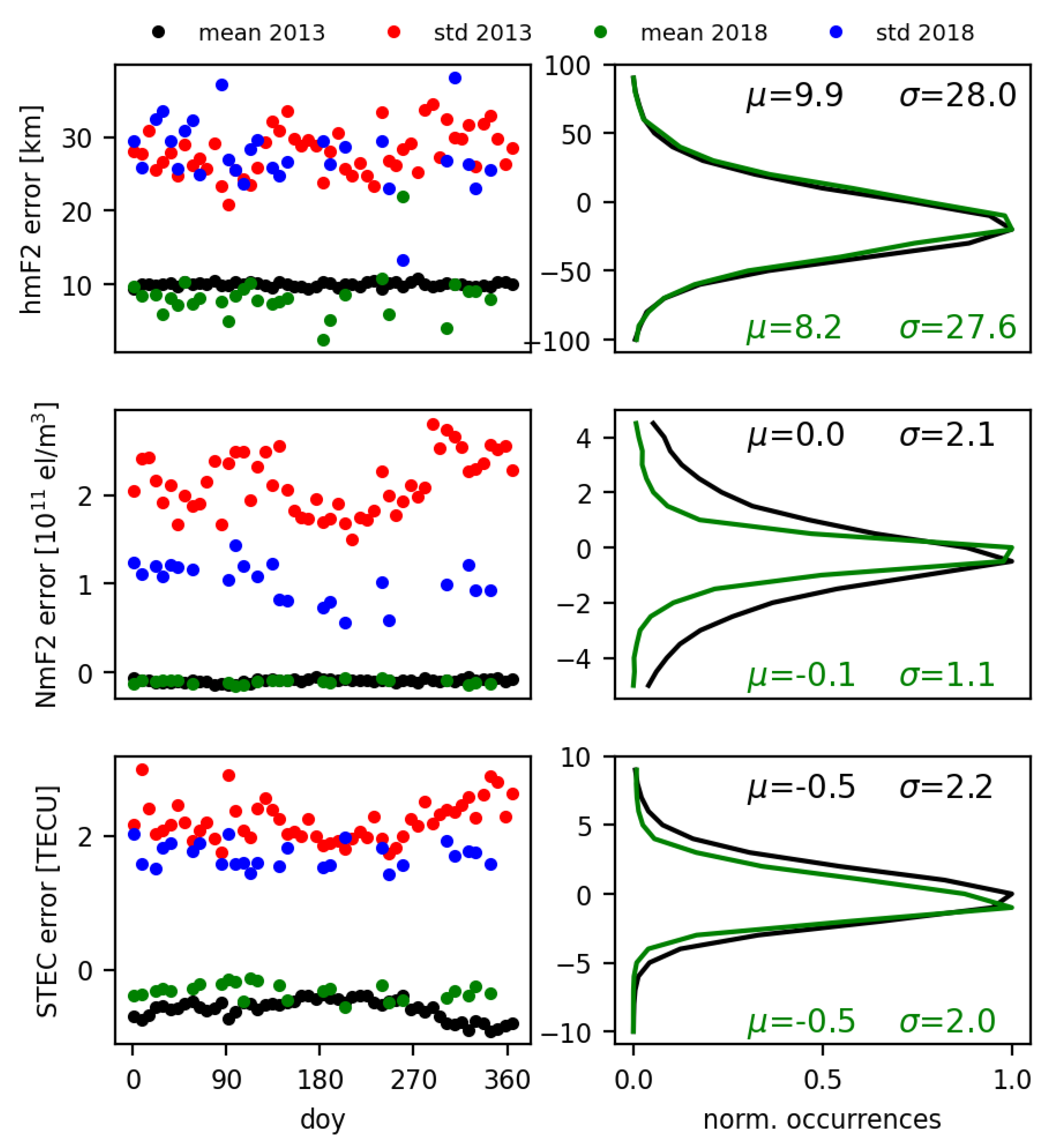
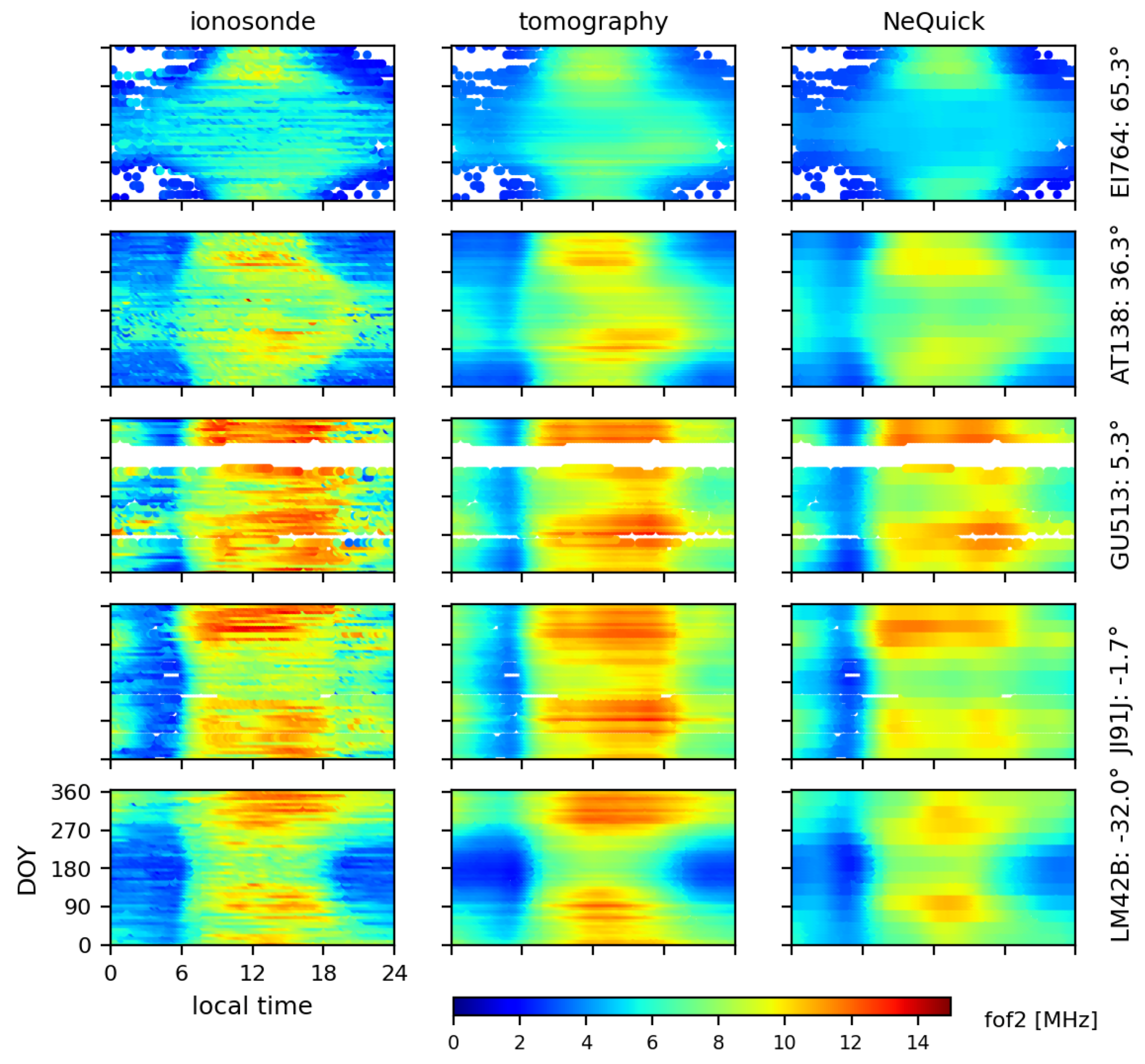
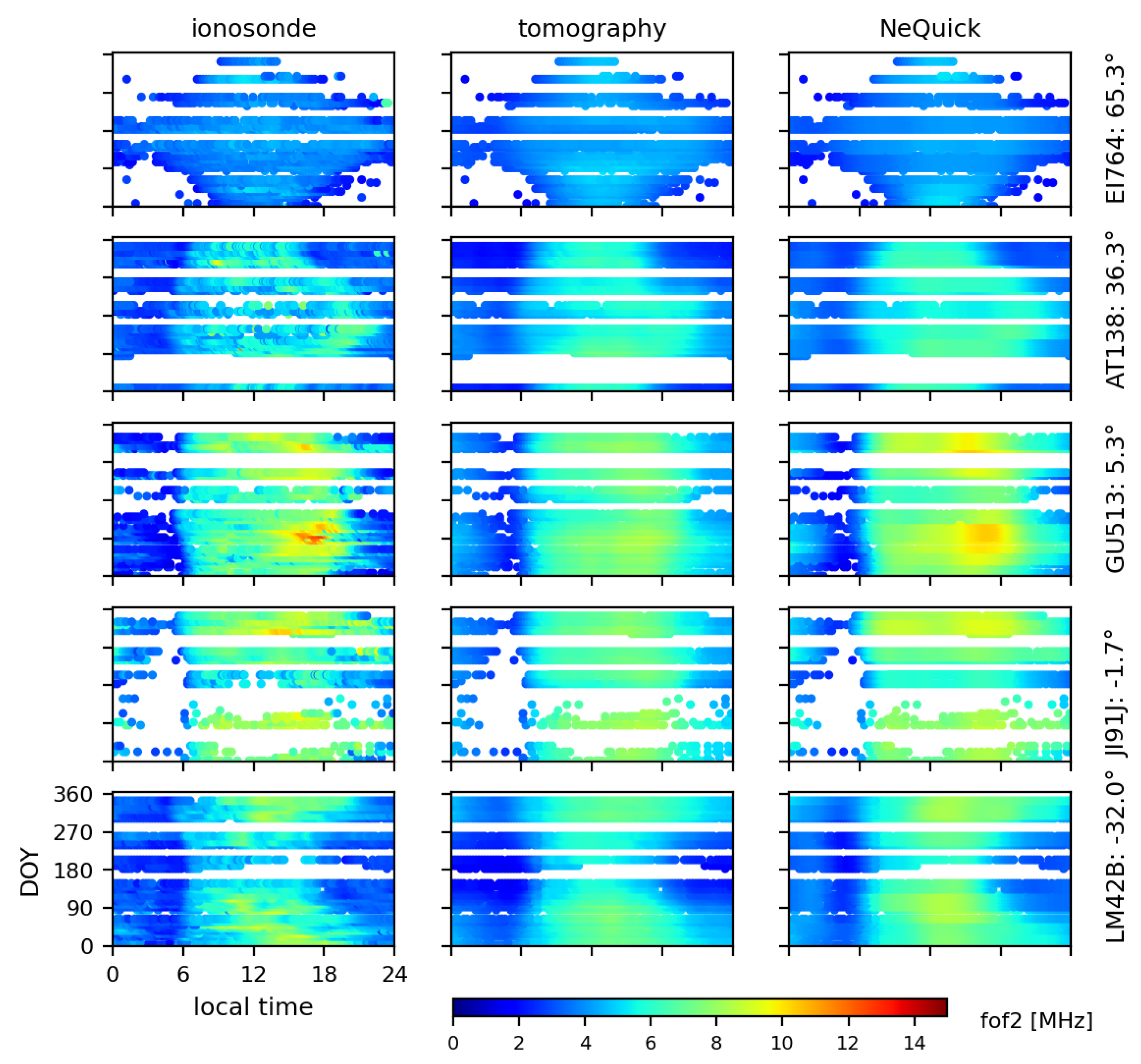
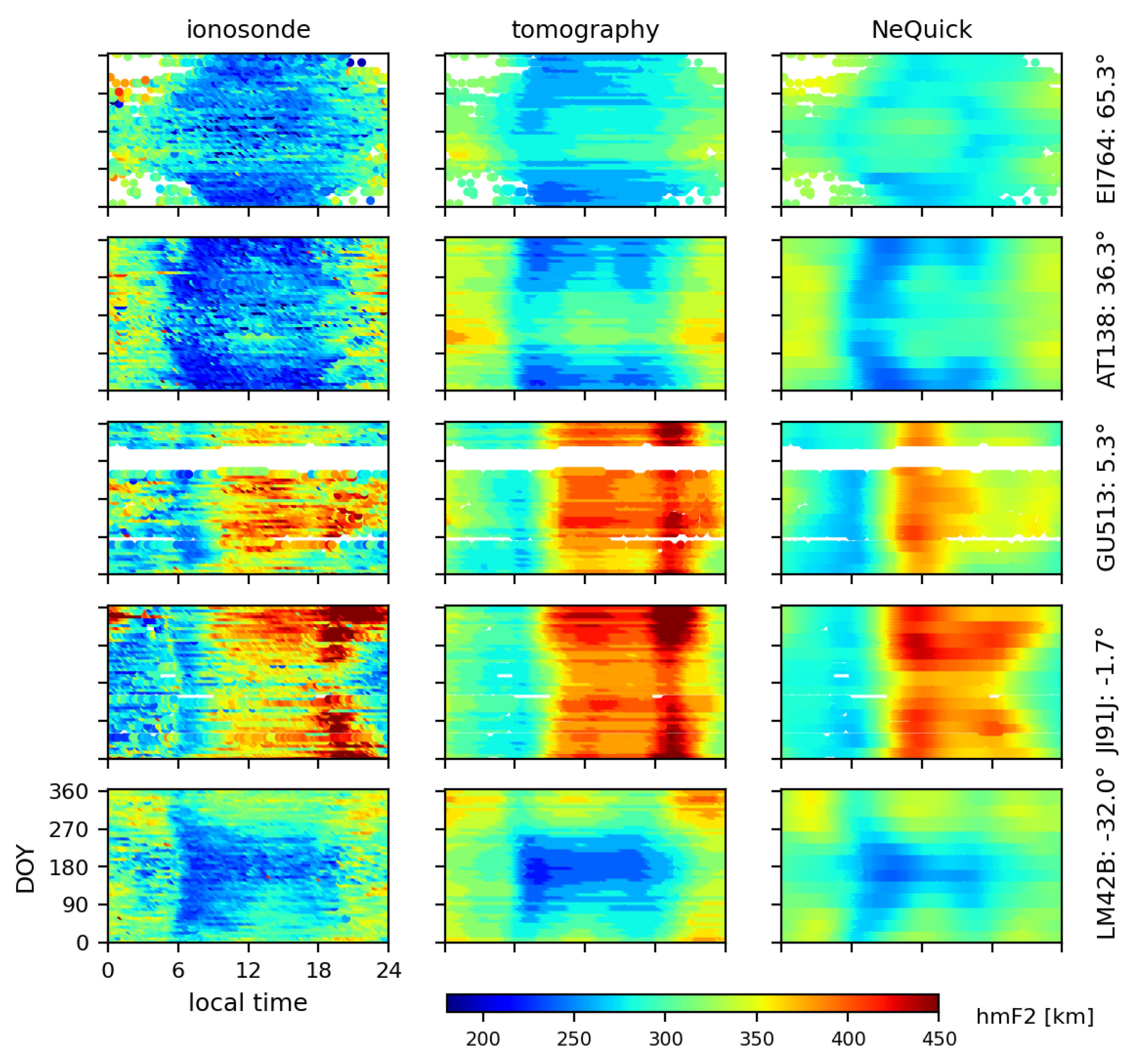
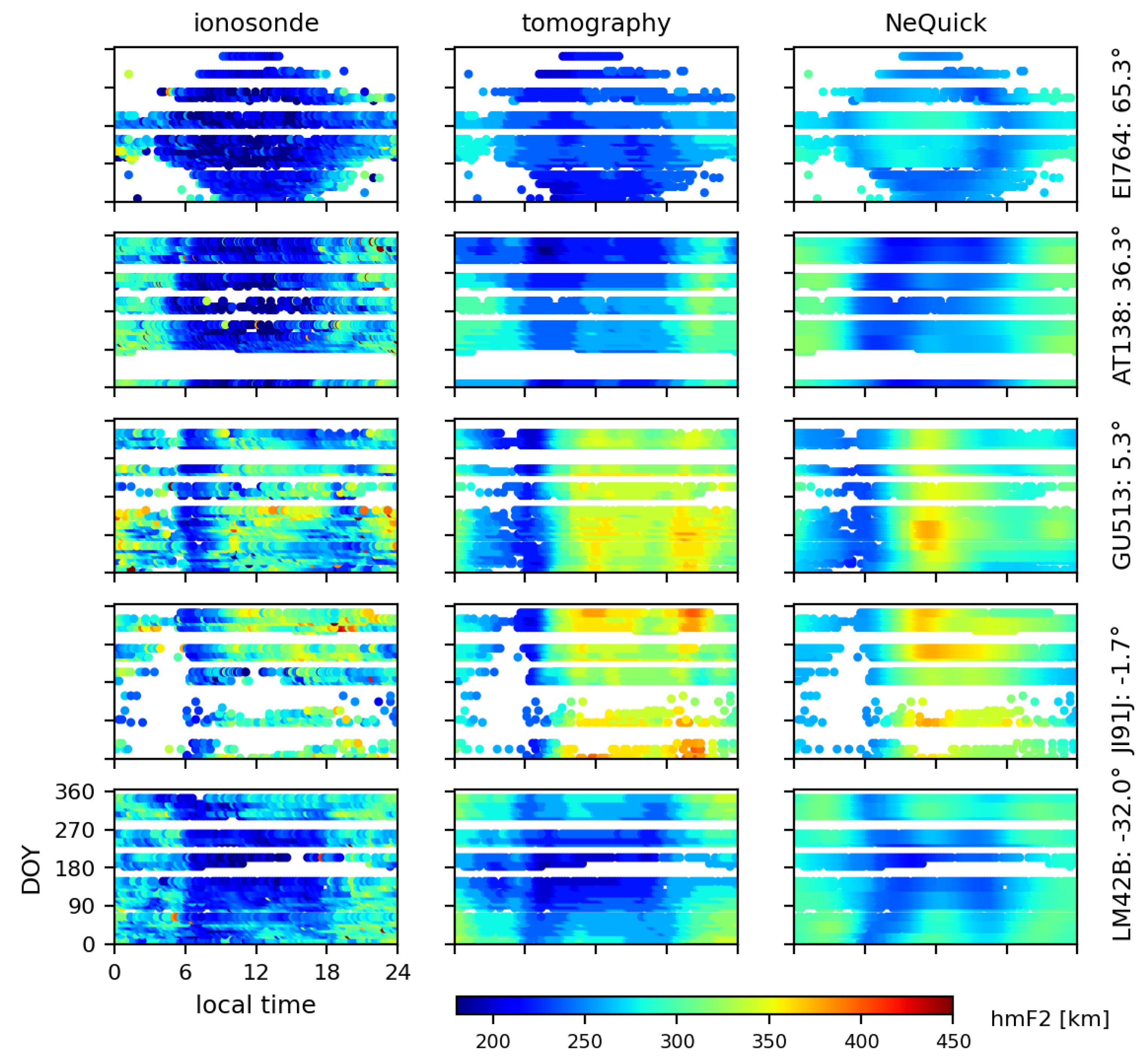
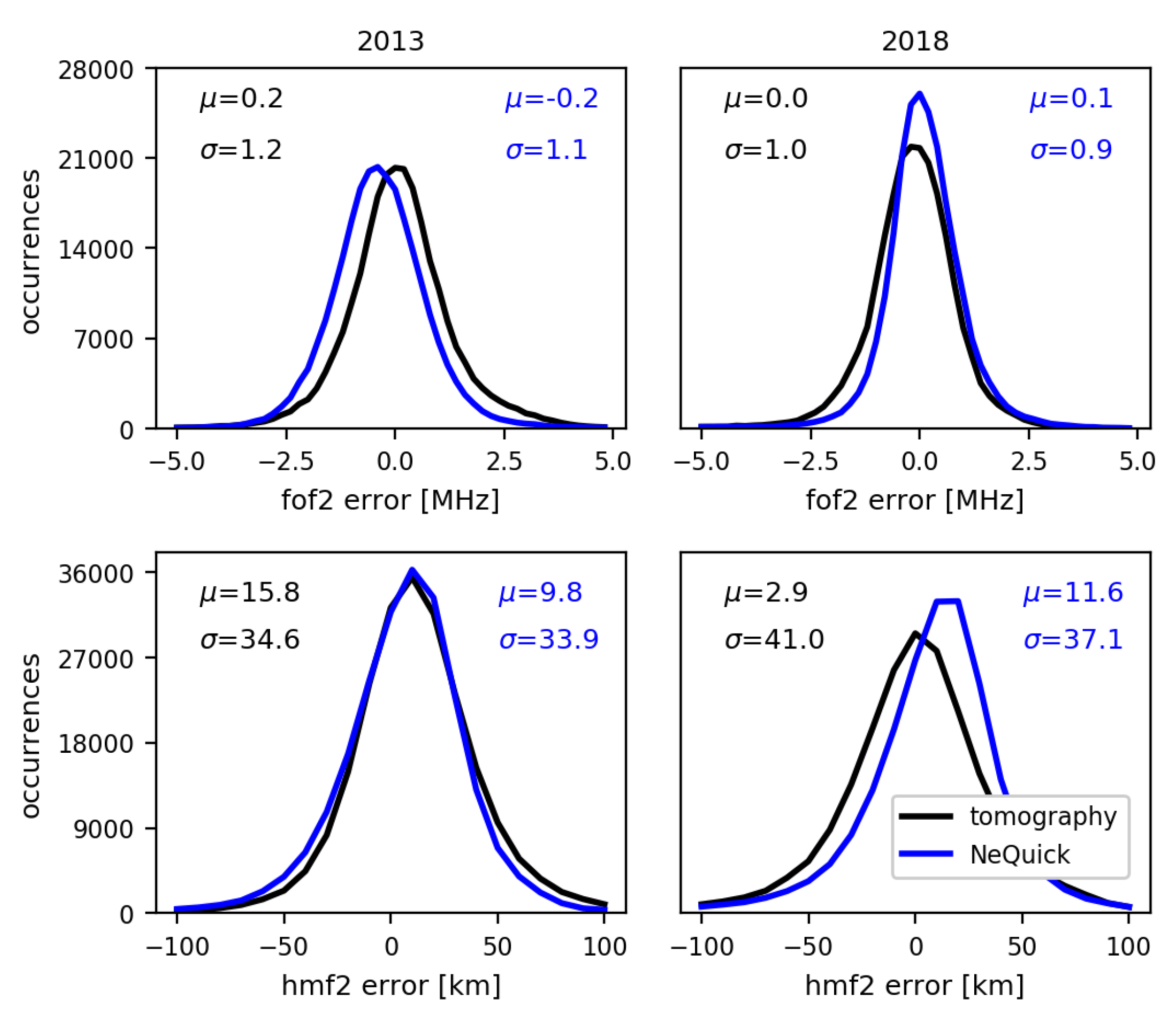
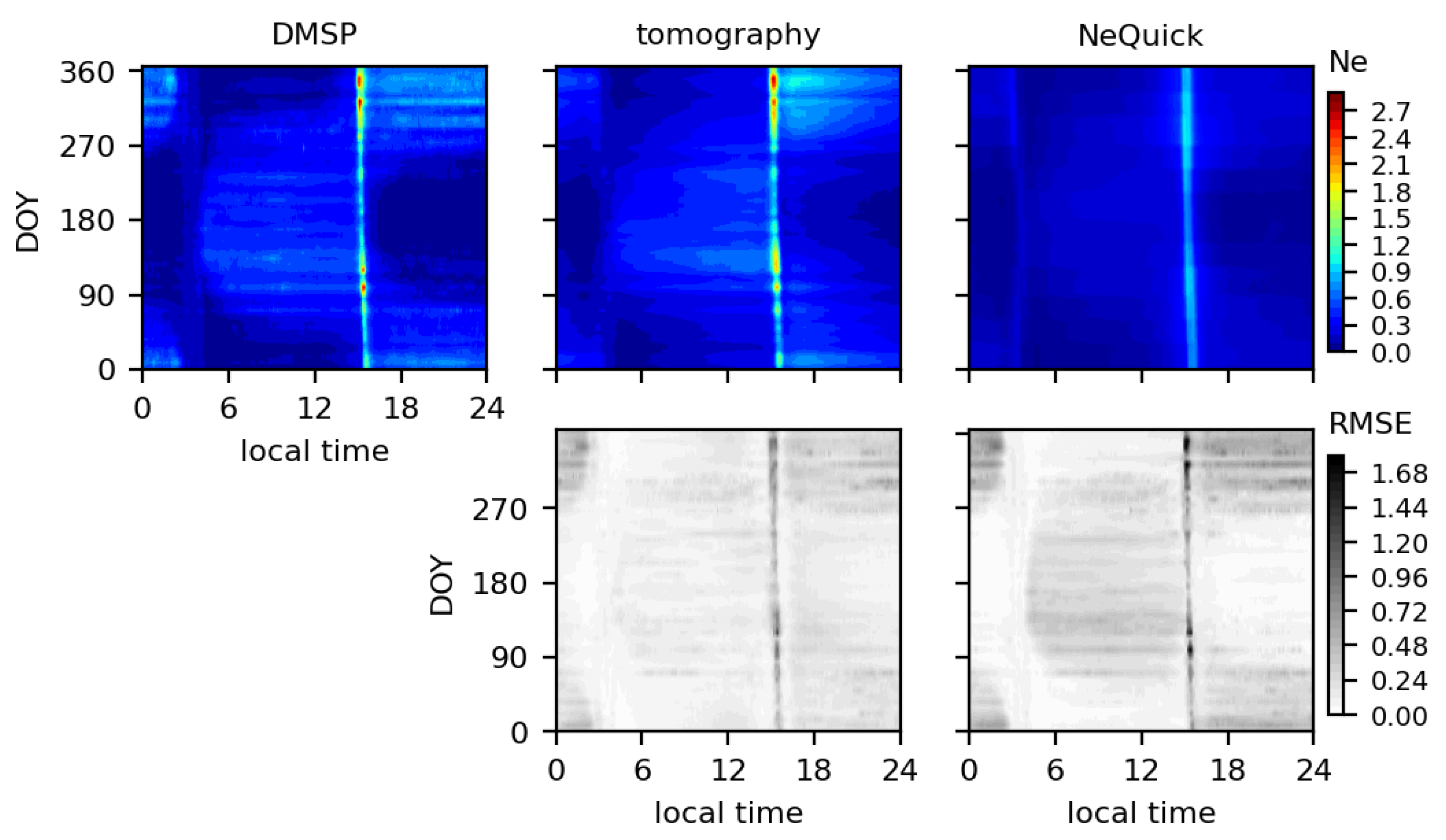
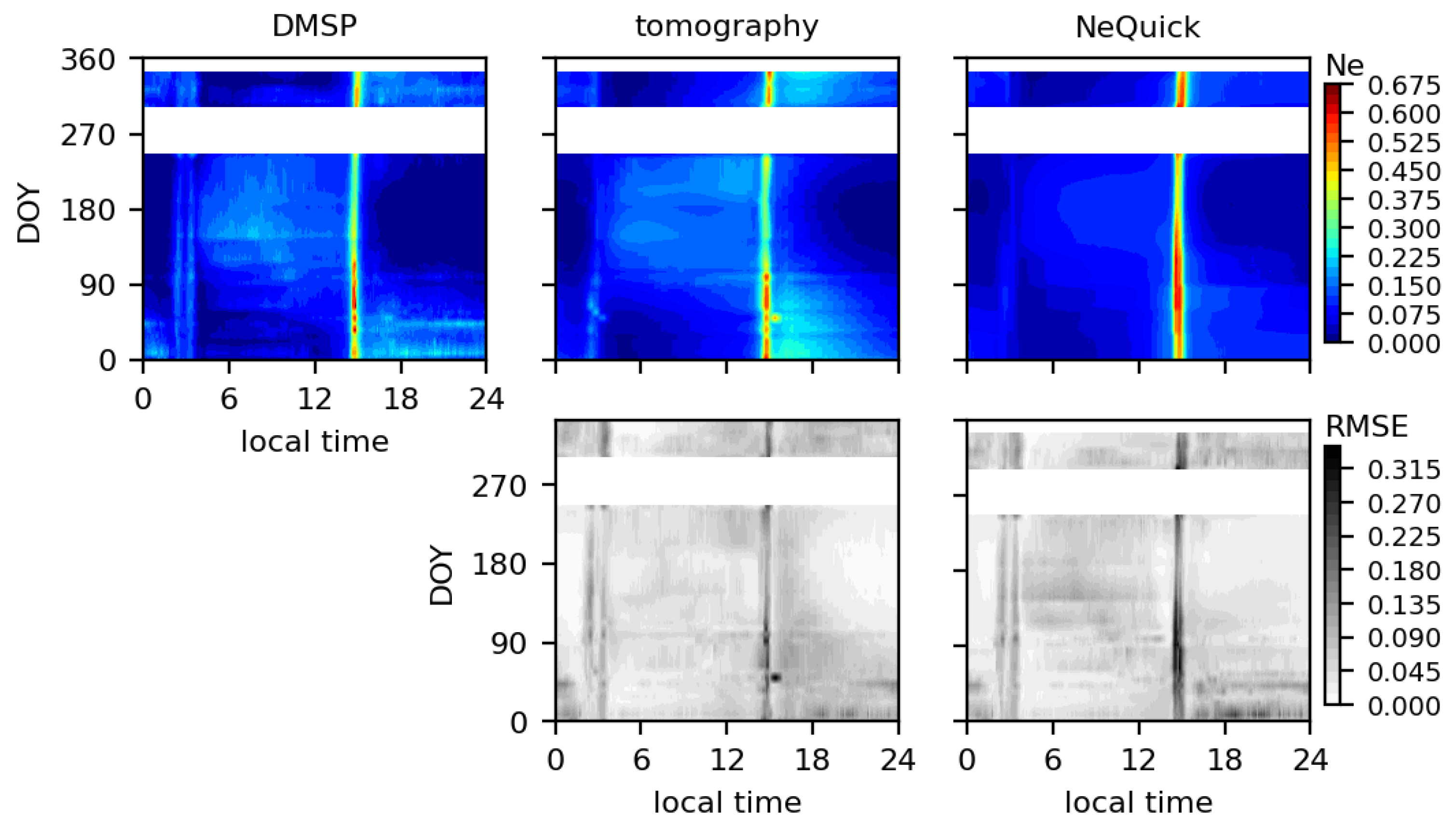
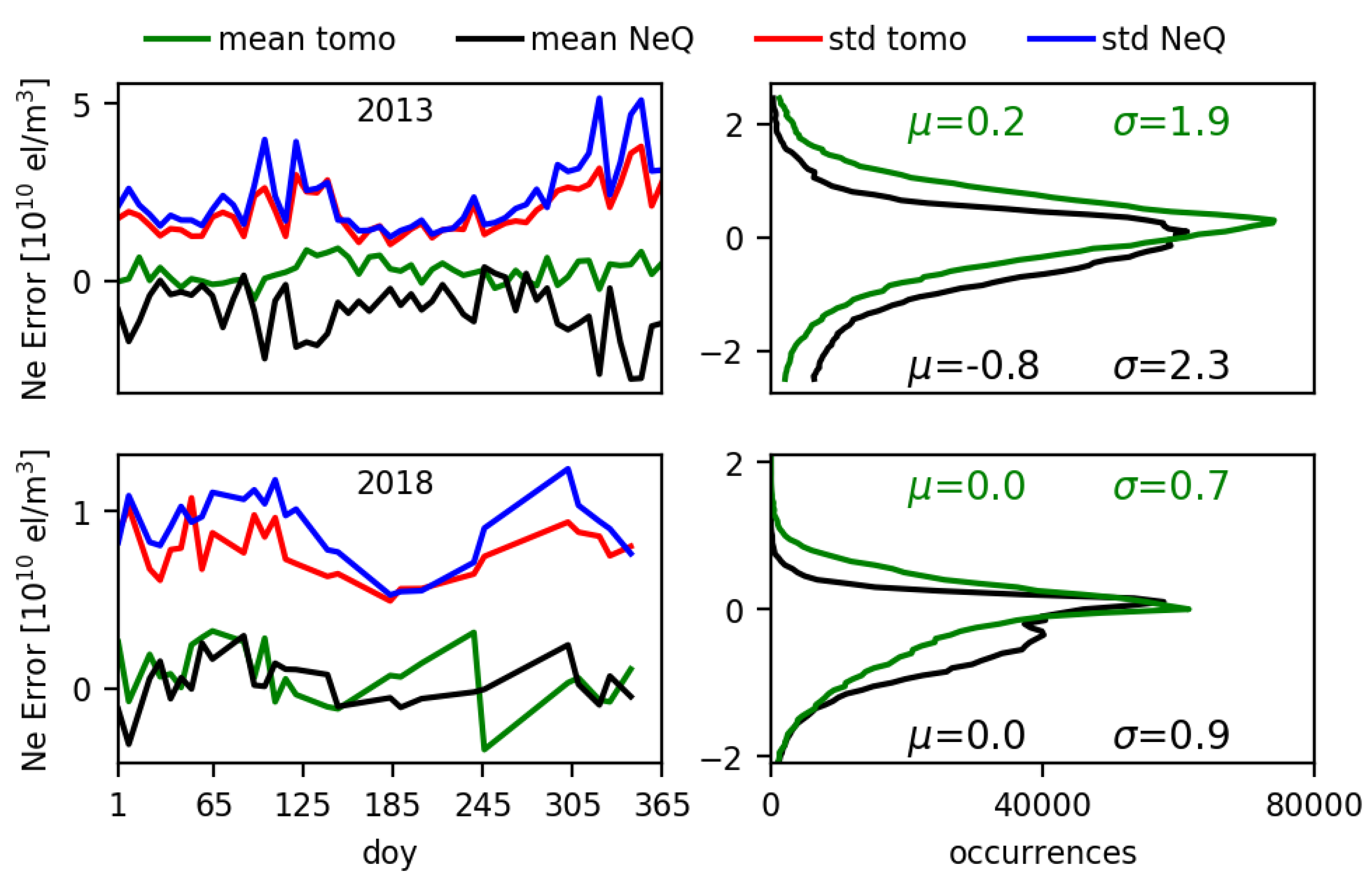
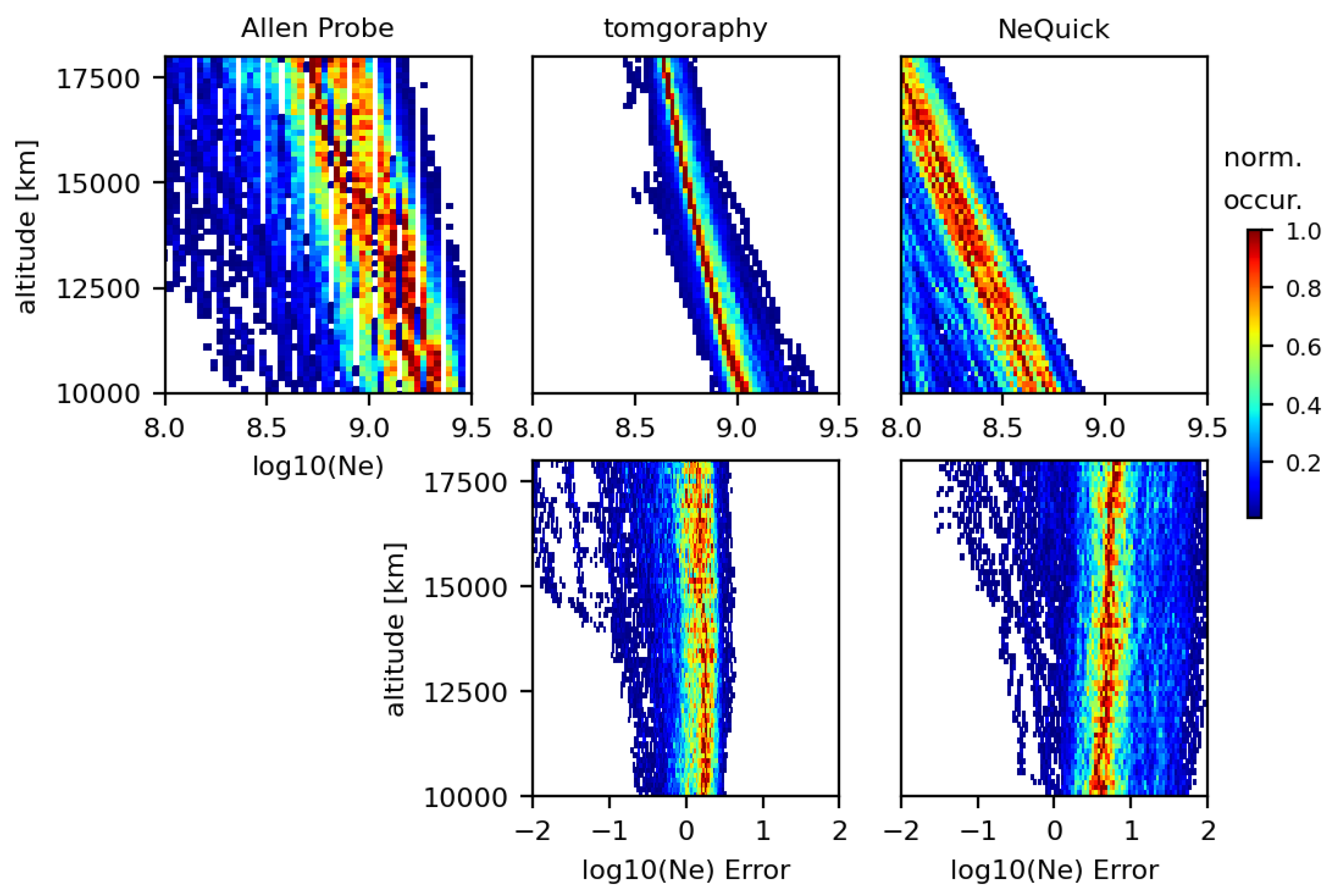
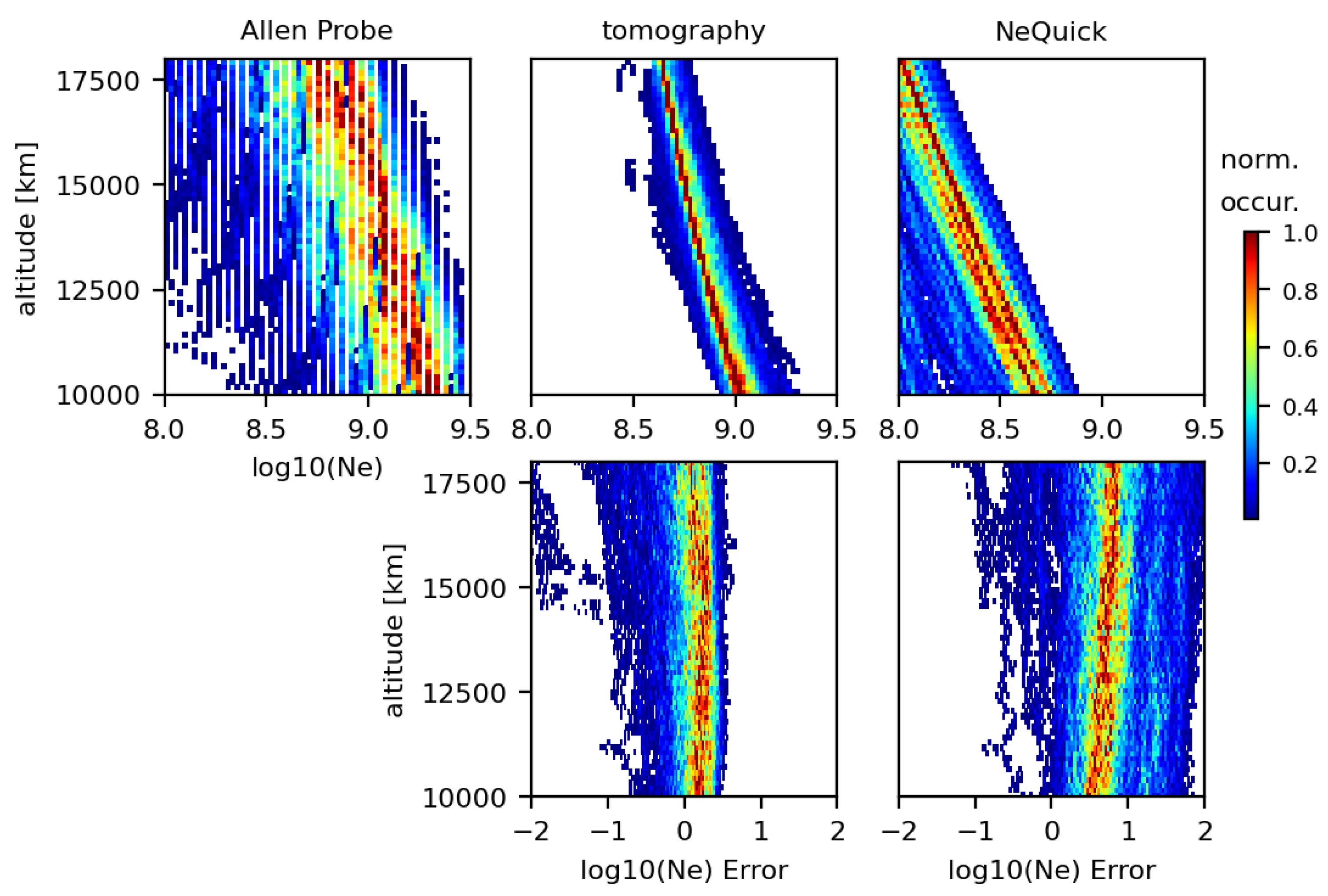
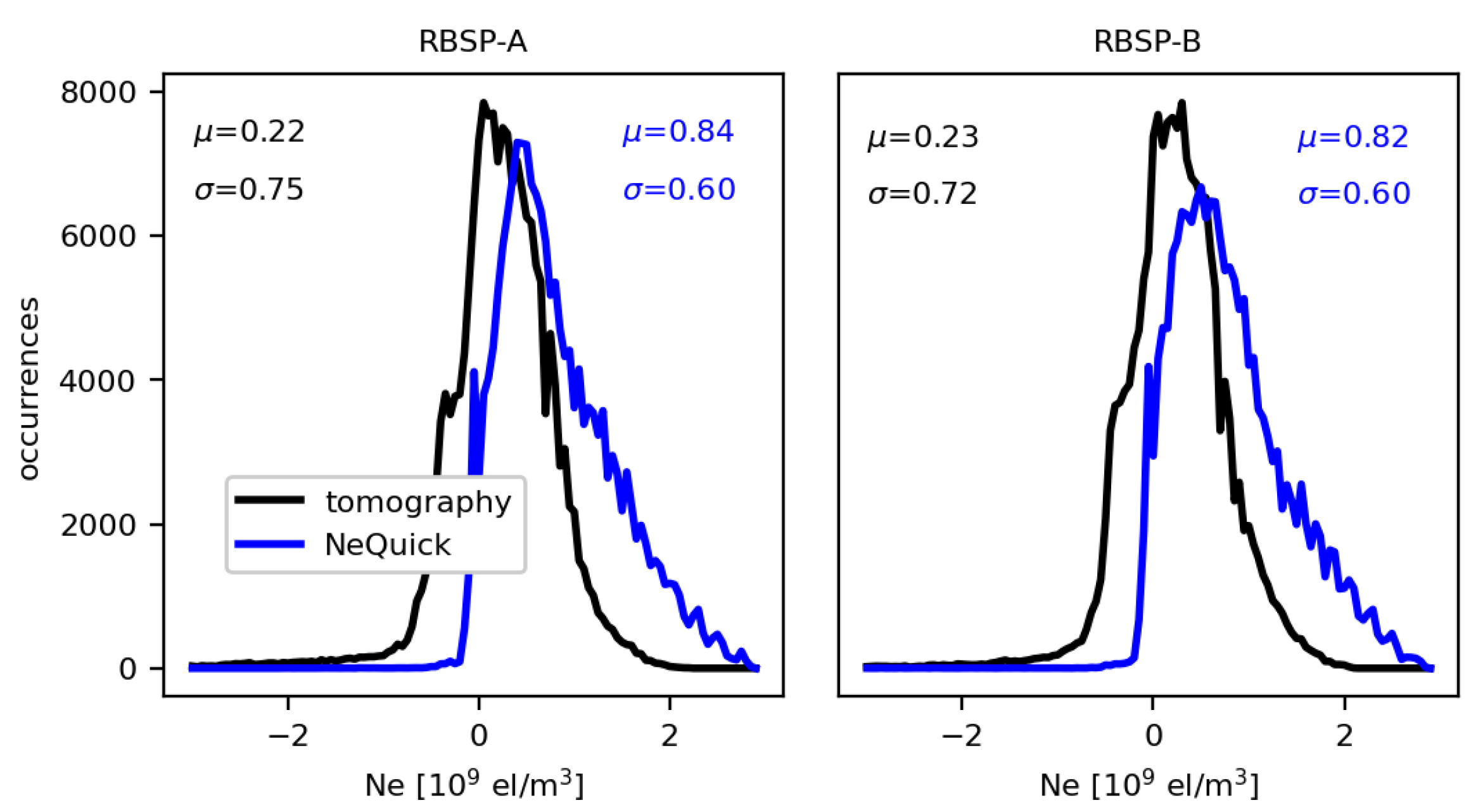
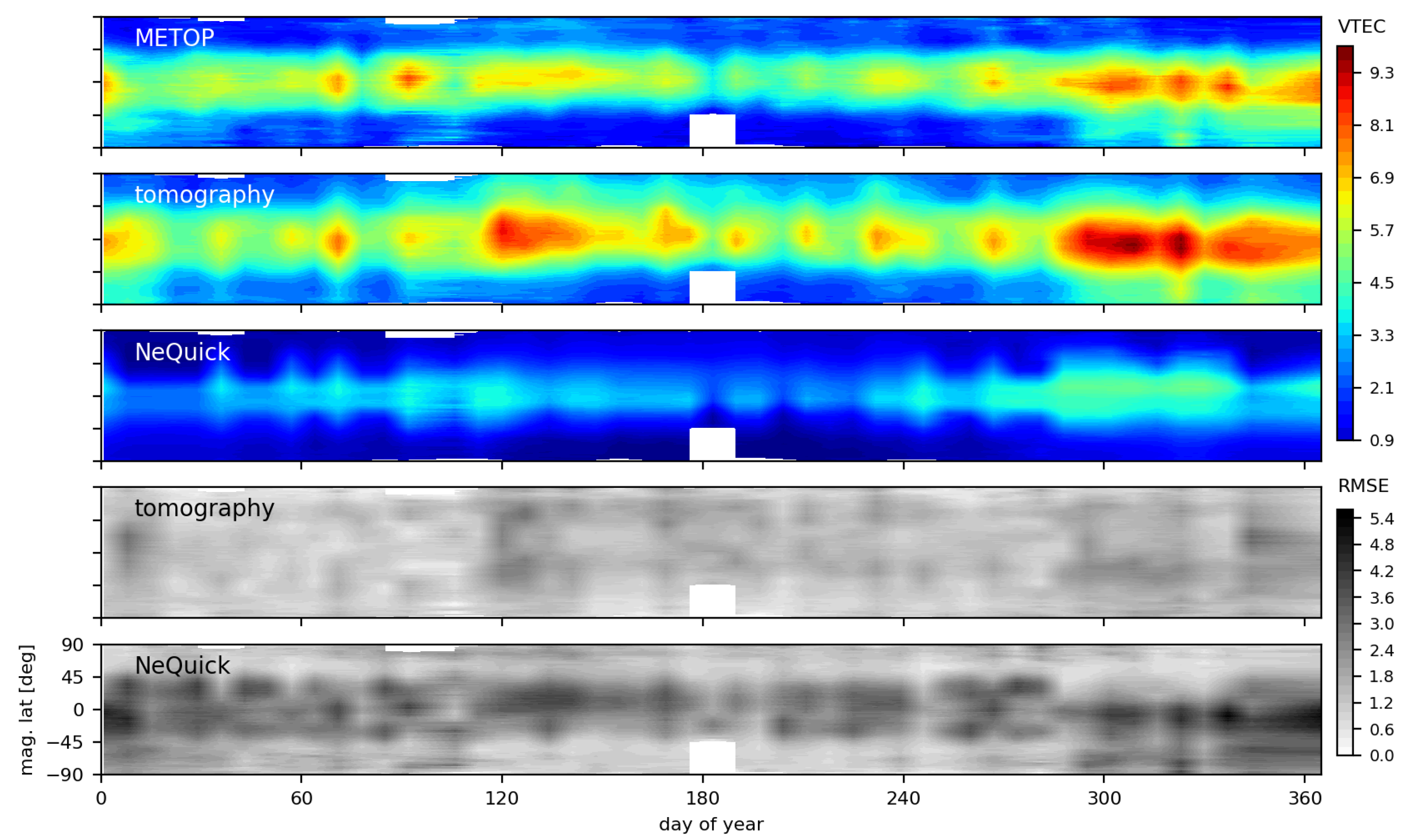

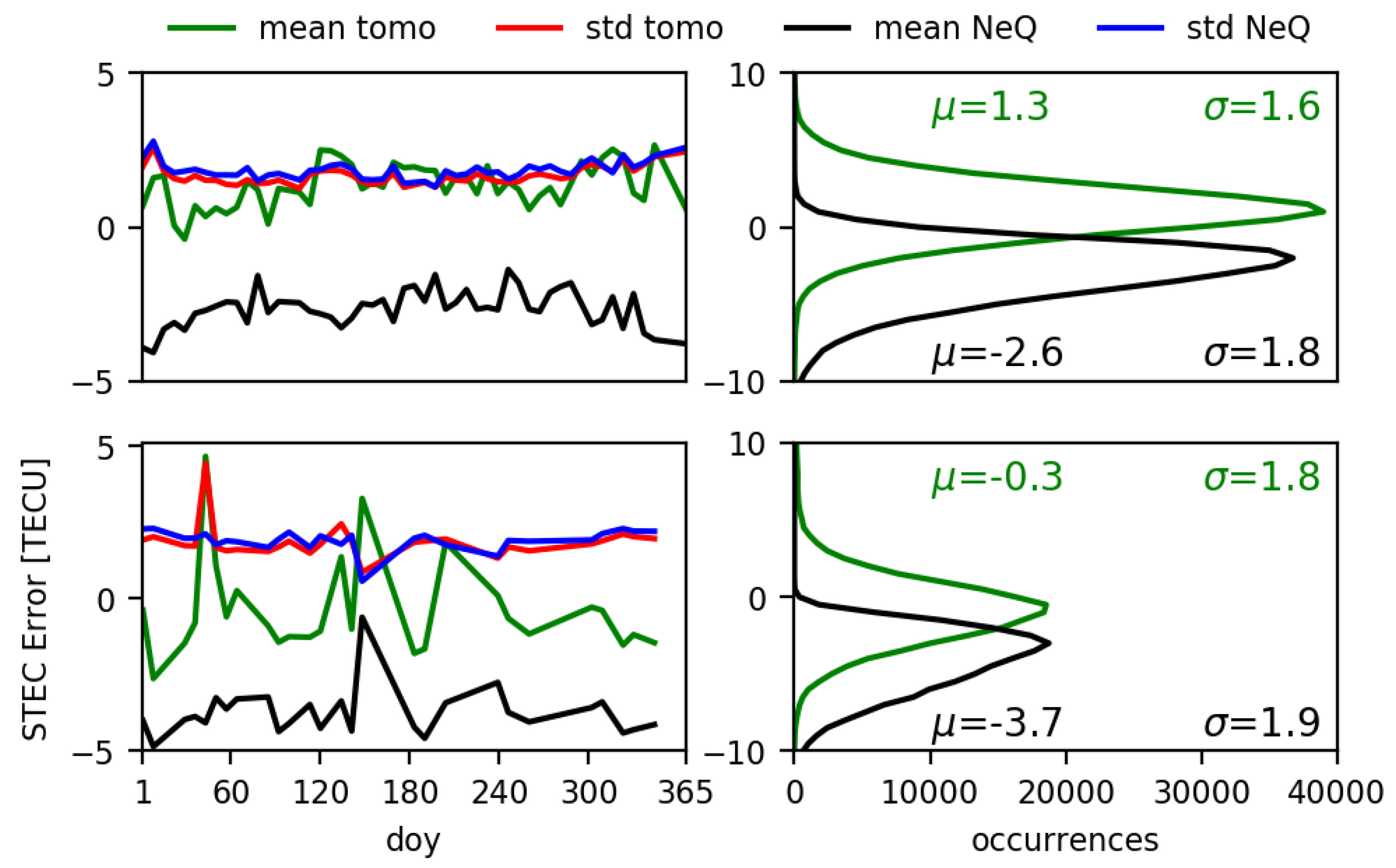
Publisher’s Note: MDPI stays neutral with regard to jurisdictional claims in published maps and institutional affiliations. |
© 2021 by the authors. Licensee MDPI, Basel, Switzerland. This article is an open access article distributed under the terms and conditions of the Creative Commons Attribution (CC BY) license (https://creativecommons.org/licenses/by/4.0/).
Share and Cite
Prol, F.S.; Hoque, M.M. Topside Ionosphere and Plasmasphere Modelling Using GNSS Radio Occultation and POD Data. Remote Sens. 2021, 13, 1559. https://doi.org/10.3390/rs13081559
Prol FS, Hoque MM. Topside Ionosphere and Plasmasphere Modelling Using GNSS Radio Occultation and POD Data. Remote Sensing. 2021; 13(8):1559. https://doi.org/10.3390/rs13081559
Chicago/Turabian StyleProl, Fabricio S., and M. Mainul Hoque. 2021. "Topside Ionosphere and Plasmasphere Modelling Using GNSS Radio Occultation and POD Data" Remote Sensing 13, no. 8: 1559. https://doi.org/10.3390/rs13081559
APA StyleProl, F. S., & Hoque, M. M. (2021). Topside Ionosphere and Plasmasphere Modelling Using GNSS Radio Occultation and POD Data. Remote Sensing, 13(8), 1559. https://doi.org/10.3390/rs13081559





